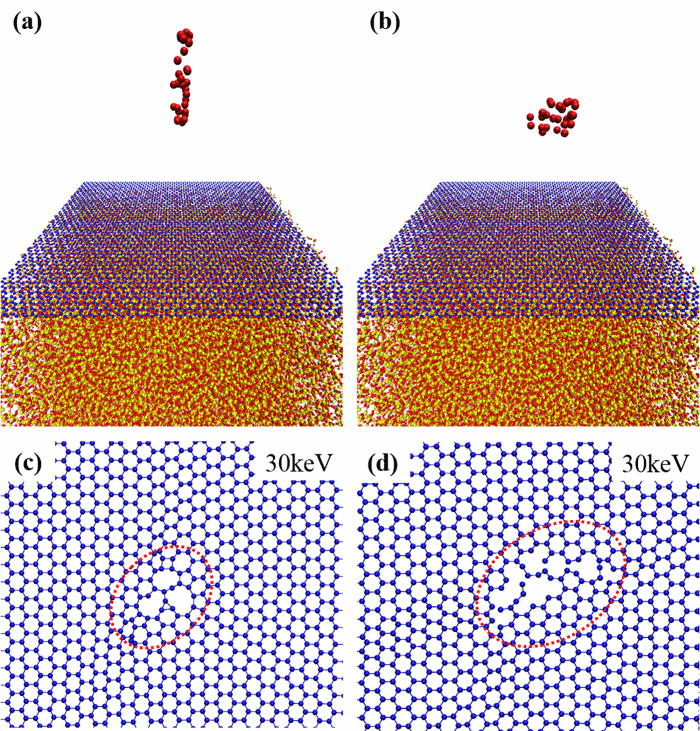Raman mapping is performed to study the lateral damage in supported monolayer graphene carved by 30 keV focused Ga+ beams. The evolution of the lateral damage is tracked based on the profiles of the intensity ratio between the D (1341 cm−1) and G (1582 cm−1) peaks (ID/IG) of the Raman spectra. The ID/IG profile clearly reveals the transition from stage 2 disorder into stage 1 disorder in graphene along the direction away from the carved area. The critical lateral damage distance spans from <1 μm up to more than 30 μm in the experiment, depending on the parameters used for carving the graphene. The wide damage in the lateral direction is attributed to the deleterious tail of unfocused ions in the ion beam probe. The study raises the attention on potential sample damage during direct patterning of graphene nanostructures using the focused ion beam technique. Minimizing the total carving time is recommended to mitigate the lateral damage.

Raman mapping is performed to study the lateral damage in supported monolayer graphene carved by 30 keV focused Ga+ beams. The evolution of the lateral damage is tracked based on the profiles of the intensity ratio between the D (1341 cm−1) and G (1582 cm−1) peaks (ID/IG) of the Raman spectra. The ID/IG profile clearly reveals the transition from stage 2 disorder into stage 1 disorder in graphene along the direction away from the carved area. The critical lateral damage distance spans from <1 μm up to more than 30 μm in the experiment, depending on the parameters used for carving the graphene. The wide damage in the lateral direction is attributed to the deleterious tail of unfocused ions in the ion beam probe. The study raises the attention on potential sample damage during direct patterning of graphene nanostructures using the focused ion beam technique. Minimizing the total carving time is recommended to mitigate the lateral damage.
